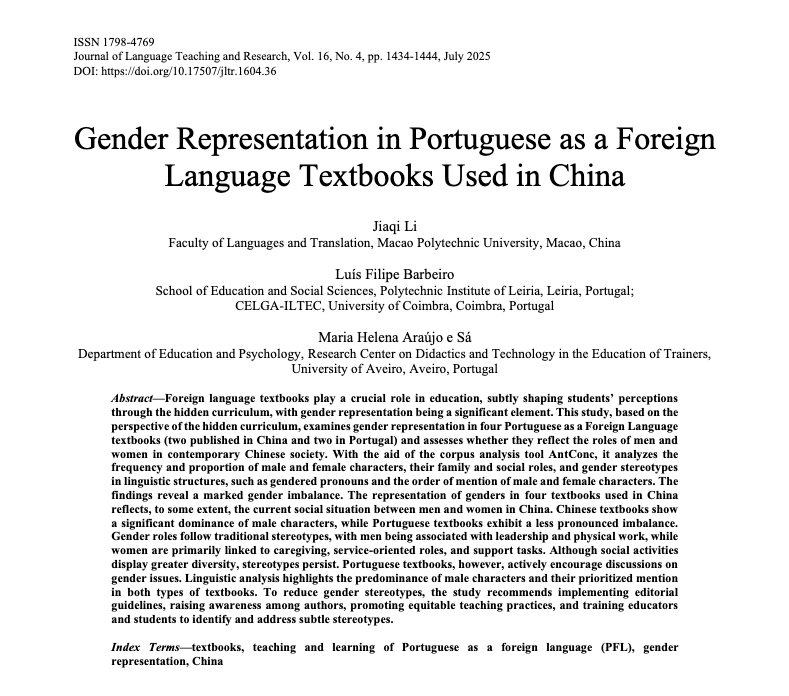Jiaqi Li, Luís Filipe Barbeiro & Maria Helena Araújo e Sá (CIDTFF) | Journal of Language Teaching and Research, 16(4), 1434-1444
Abstract
Foreign language textbooks play a crucial role in education, subtly shaping students’ perceptions through the hidden curriculum, with gender representation being a significant element. This study, based on the perspective of the hidden curriculum, examines gender representation in four Portuguese as a Foreign Language textbooks (two published in China and two in Portugal) and assesses whether they reflect the roles of men and women in contemporary Chinese society. With the aid of the corpus analysis tool AntConc, it analyzes the frequency and proportion of male and female characters, their family and social roles, and gender stereotypes in linguistic structures, such as gendered pronouns and the order of mention of male and female characters. The findings reveal a marked gender imbalance. The representation of genders in four textbooks used in China reflects, to some extent, the current social situation between men and women in China. Chinese textbooks show a significant dominance of male characters, while Portuguese textbooks exhibit a less pronounced imbalance. Gender roles follow traditional stereotypes, with men being associated with leadership and physical work, while women are primarily linked to caregiving, service-oriented roles, and support tasks. Although social activities display greater diversity, stereotypes persist. Portuguese textbooks, however, actively encourage discussions on gender issues. Linguistic analysis highlights the predominance of male characters and their prioritized mention in both types of textbooks. To reduce gender stereotypes, the study recommends implementing editorial guidelines, raising awareness among authors, promoting equitable teaching practices, and training educators and students to identify and address subtle stereotypes.
Keywords: textbooks, teaching and learning of Portuguese as a foreign language (PFL), gender representation, China
– – – – –
Referência:
Li, J., Barbeiro, L. F., & Araújo e Sá, M. H. (2025). Gender Representation in Portuguese as a Foreign Language Textbooks Used in China. Journal of Language Teaching and Research, 16(4), 1434-1444. https://doi.org/10.17507/jltr.1604.36





